Jeanne d'Arc: a historical walk through Rouen
Stumbling upon the church of Jeanne d'Arc
When I first found myself in the most central spot of Rouen, the Old-Market square (La Place du Vieux Marché), I was met with the sight of a very peculiar building, a church of some sort. It was bizzare and, rather peculiar, but not entirely out of place, despite it being surrounded by all those colourful picturesque gothic houses of the Old town. I had seen the building when I first started searching for general information on my destination, photos of it flashing by right in front of my eyes, but I never really got to properly examine what it was exactly, so the me of that time was abundandly clueless.
Perplexed, I asked a random passerby what that enormous construction was. Surprised by my question, he frowned and said "Miss, this is the church of Jeanne d'Arc! " and he left in a hurry. At first, all that crossed my mind was that it was just a church dedicated to the infamous female french warrior, who was most loved or even worshipped accross the country and especially the region of Northern France, where she took action.
But then I saw it. A tall pole with a cross on its high end, standing right next to the bizarre church and looming over the square. I then knew, this was neither an ordinary church nor an ordinary square. This was the exact place where Jeanne's life was consumed by flames, right where that pole was.

The cross indicates where the pole is
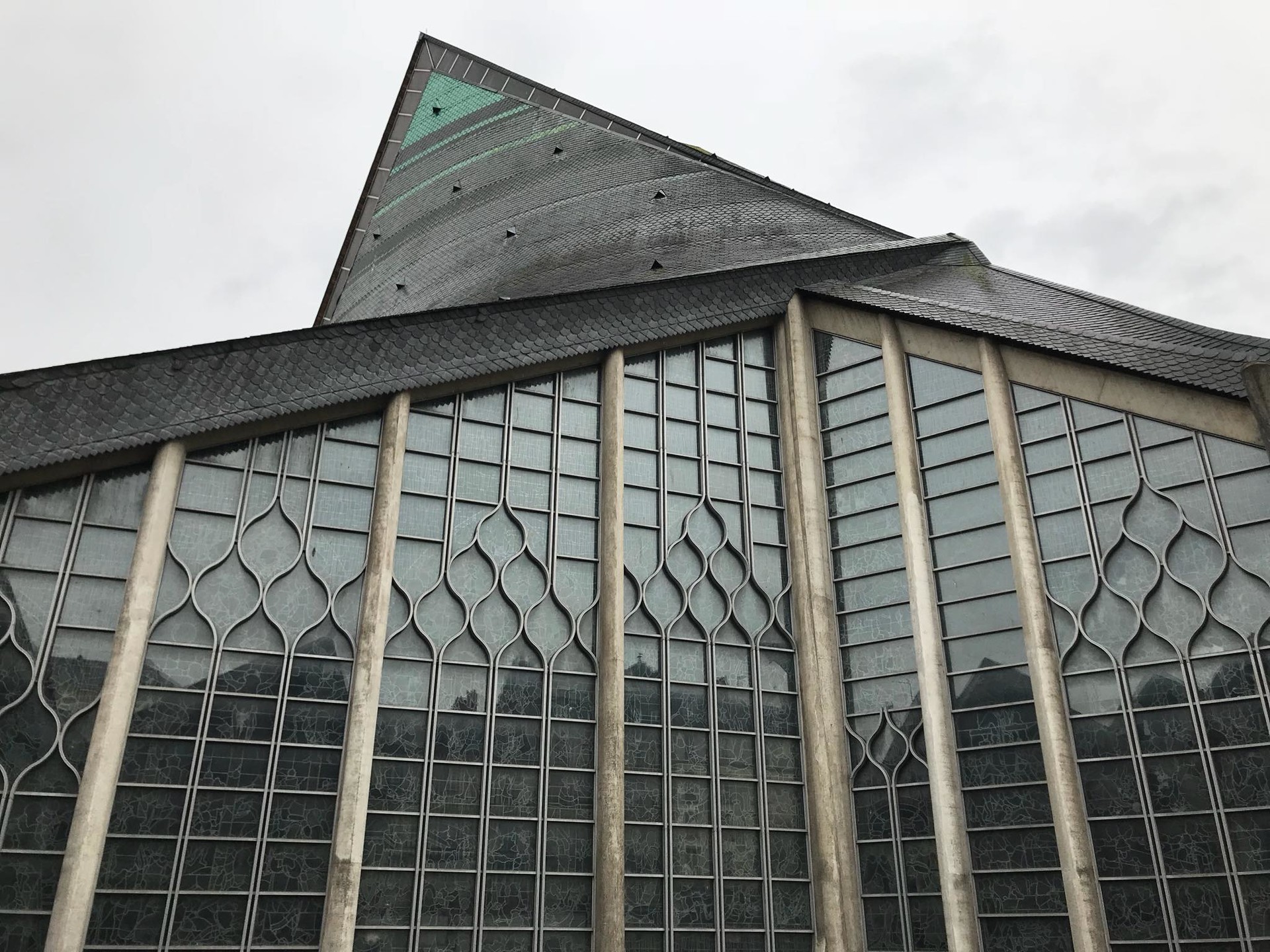
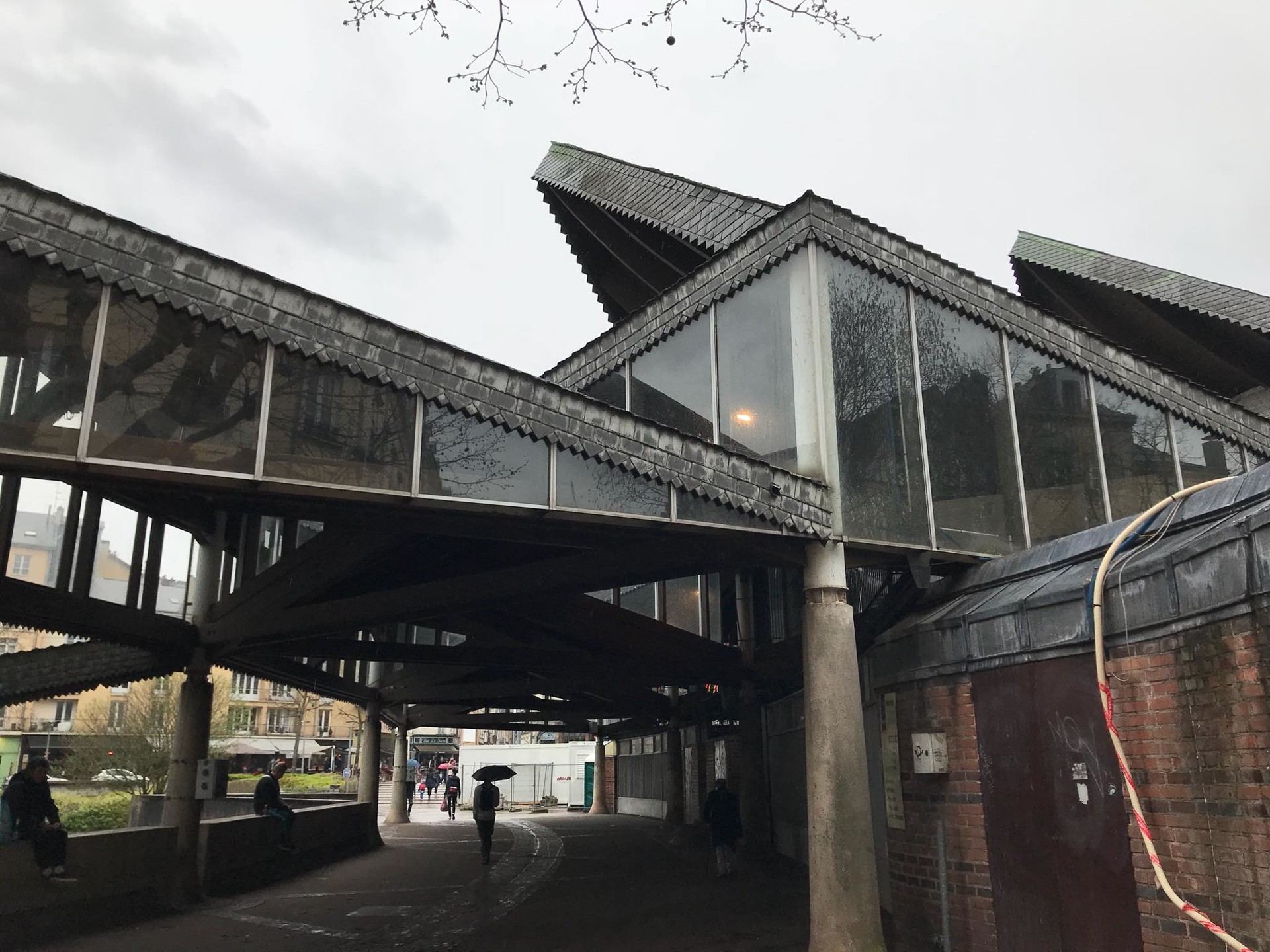
Various views of the church

The church from within, the peculiarity continues in the interior
I was overcome by a feeling of dread, and images of a possible witch-hunt scenario started to flood my mind. It was eerie, unsettling and yet, suddenly, these feelings made the city seem all the more... important to me. A place grown by war and death, and yet which managed to stay so beautiful and warm throughout the years. It was all new to me, so my interest in Rouen grew even bigger, and this time for a reason which had to do with more than what is on the surface; the story behind the picture book.
Later, throughout my Erasmus I would come to learn an enormity of historical facts about it, once being one of the greatest and most influential cities of the North, about its involvement with other great figures such as William the Conqueror or Rollo the Viking and so much more! However, I believe some light should be first and foremost shed on the case of Jeanne, as she is, perhaps, one of the greatest models of women empowerment and her story, even though sometimes obscure, can be interpreted in many ways.
Jeanne's story, echoing in the streets of Rouen
Wandering around Rouen, I started noticing Jeanne's presence everywhere. Her supposed face, painted on the walls of some alleys, various objects fashioned after her many, knight-like illustrations popping in various antique shop showcases, and of course, across the churches and museums of Rouen. You see, for France, Jeanne is more than just a historical revolutionnary figure, she is a Saint. And that alone, explains why in a place like Rouen, where she took her final breath, her shadow still roams the streets and inhabits the hearts of people. She is loved, even though back then, she wasn't.
That being said, Jeanne's life and her choices have been discussed over and over again by, not only historians and experts, but also everyday people. Why did she act the way she did and what led to the outcome we all know? Me, having watched some movies or read part of her story, I hadn't really formed a proper opinion, but was nonetheless in awe of her strong resolve. After all, she was just a kid when she decided to take the path she did, which implies a great amount of bravery, valor if you wish, and yet, her character remained a mystery to me. However, a visit to Rouen's Historial Jeanne d'Arc aided in my understanding of the entire case and I will properly explain why.
Historial Jeanne d'Arc: reviving the legend by contemporary means
As an erasmus student I certainly wanted to do more than partying and studying, and had an immense craving to explore as much as I could, so my newfound information on Jeanne only served to my start of a historical route through some of the main points that explained her story. In case you are not familiar with (or if you want to refresh your knowledge of) Jeanne's life, the clever exhibition in the Historial will be more than enough of a great beginning.
What you will see in said museum is a take on the second trial of Jeanne d'Arc which took place a few decades after her death at the Old-Market square, where all the evidence was re-examined so that a final decision on her sentence's fairness could be reached. In other words, Jeanne's burning at the stake was heavily questionned, and so, years after, the people responsible for her death (a type of jury) were called upon to testify once more, but this time in a whole different context, as the political situation of France had changed significantly, and so a great number of people previously condemned, were afterwards found innocent. Jeanne, of course, would be one of the most intriguing cases, and as such, people from as far as her childhood and her hometown were also invited to take part in the process.
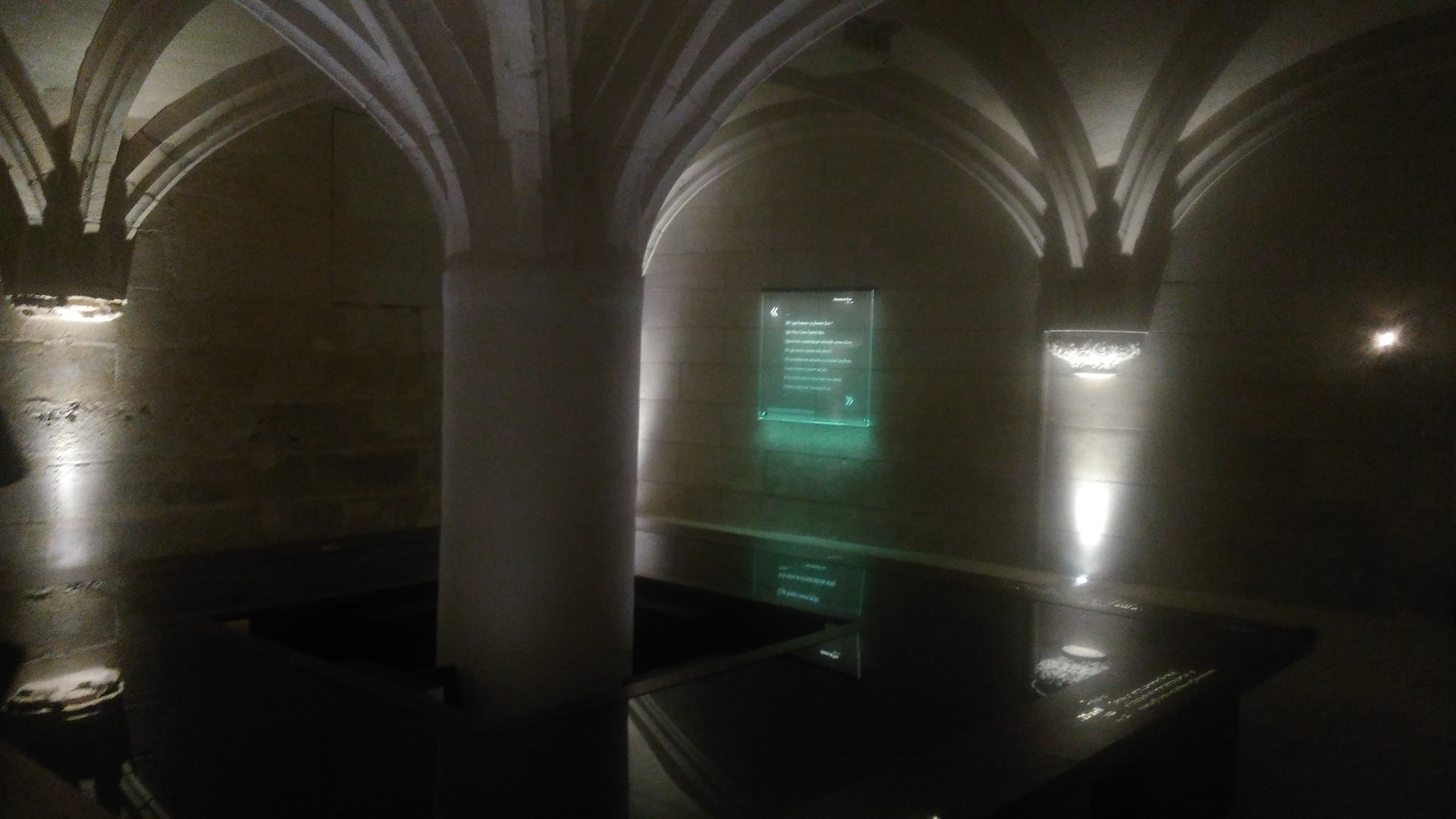
One of the rooms of the Historial
The trial is represented by a theatrical act which is projected across the walls of the rooms, beginning at the cathedral's crypt and all the way up to the upper levels, where you will be able to get a breathtaking view of the area. In other words, you see the characters discuss Jeanne's life step by step, at times commenting so as to maintain the beliefs and the general "feeling" of the era. In this way, not only is it possible to find out about her background and short-lived expeditions, but also to perhaps understand (to a certain degree) the psychology behind all this.
My narration of Jeanne's life (skip if you already know it or want to find out more on your own! )
As I personally believe that it is much better and of course more engaging to experience this yourself, I will try to narrate the short version of the story, the way I interpreted it after visiting the Historial, so here goes nothing!
Jeanne grew up in the countryside, in one of the small areas that were still not conquered by the English, and was a very quiet girl who her neighbours witnessed pray to God regularly and not cause any trouble, always contributing in the chores of her household. Around the time she was thirteen years old, the maiden claimed to have started hearing voices, supposedly of divine origin.
Later, when she became seventeen, Jeanne set off to see Henry V, presenting herself as a prophet who would return the throne to him, the rightful heir. Though doubtful, the man quickly came to have faith in Jeanne, as she seemed to be aware of things that no one but him should be able to know (and because of some other reasons which will be explained in the visit). Thus, he bestowed her a small army for her expedition which was about to begin. Jeanne cut off her hair, wore men's armor and left on her horse to reclaim the city of Orleans.
Very little time passed and she succeded, as her army was convinced of her divinity, and so their courage (and their enemies' fear) was exaggerated. In other words, Jeanne was a catalyst to their morale, regardless of her disposition, which is what makes her story so interesting! The exact strategy followed as well as the series of events of the battle of Orleans are analysed in the museum through a detailed projection, so I am certain you will understand everything better in there!
As promised, Henry V's coronation became a reality, and Jeanne tried to later take on the greater task of liberating Paris, which due to numerous reasons, she failed to accomplish. The people began to lose heart and doubted her benevolence and purity. After a series of events which will probably take a while to explain, the female warrior was pulled off her horse, captured and led to the city of Rouen, where she was imprisoned and questioned.
When she refused to compromise her ideals regarding her faith and motive, Jeanne was ridiculed publicly in another extremely significant landmark of Rouen, the Abbey of Saint-Ouen, where she was driven to agree on wearing female clothing and abandonning her old ways. She was then led back to her cell, but after a few days she decided to revert back, wearing her armor once more.
Seeing her dissobeyance to the commands of the church, a jury was formed to make a decision regarding the young girl's fate. Let me remind you that Jeanne was a maiden of nineteen years, a very young woman who had, despite her age, managed to do so much, in a span of only two years. Dismissing all that, she was condemned to be burned at the stake, as a witch, in front of the people of Rouen.
In the virtual projection of the second trial, it becomes known to the viewers that Jeanne was found innocent, as her faith in her own God, rather than the church, was not considered something that could lead to a death penalty, not to mention the jury seemed to have taken into consideration minor factors such as the male clothing.
The exhibition reaching up to modern days
Later on, Jeanne d'Arc would become the symbol of France, sometimes considered the protector of young girls and a figure of morality and freedom. As one can see in the continuation of the Historial, after ascending to the top level and seeing various places of interest regarding her story (Saint-Ouen, the dungeon where she was kept etc), the final part refers to the take of it into the arts, such as cinematography or theatre, and of course, comprises an analysis of her behavioural patterns and standing by various historians and anthropologists, via a virtual innovative platform.

Various costumes of the numerous "Jeannes" of the cinema
It was quite enlightening, and I ended up spending a lot of time reading up and listening to facts about her. As a female, I came to realise that regardless of her motive, Jeanne took action in a "men's world", which at that time was unthinkable, so I couldn't help but admire her determination.
The Panorama XXL of Rouen
An interesting place to visit after the Historial would be the Panorama XXL, a giant blue cylinder of a building, which is located at the west side of Rouen and is easily reachable by bus. You can't miss it, as it pops out of the urban landscape thanks to its strict geometrical shape and vivid colour. Now, that blue cylinder is actually one enormous room, where a panoramic representation of the Old Rouen is projected. This panorama was composed by an architect and artist by the name of Asisi and his team. In the centre, there is a three-level platform which you can ascend to, each time viewing a different perspective of the Panorama.
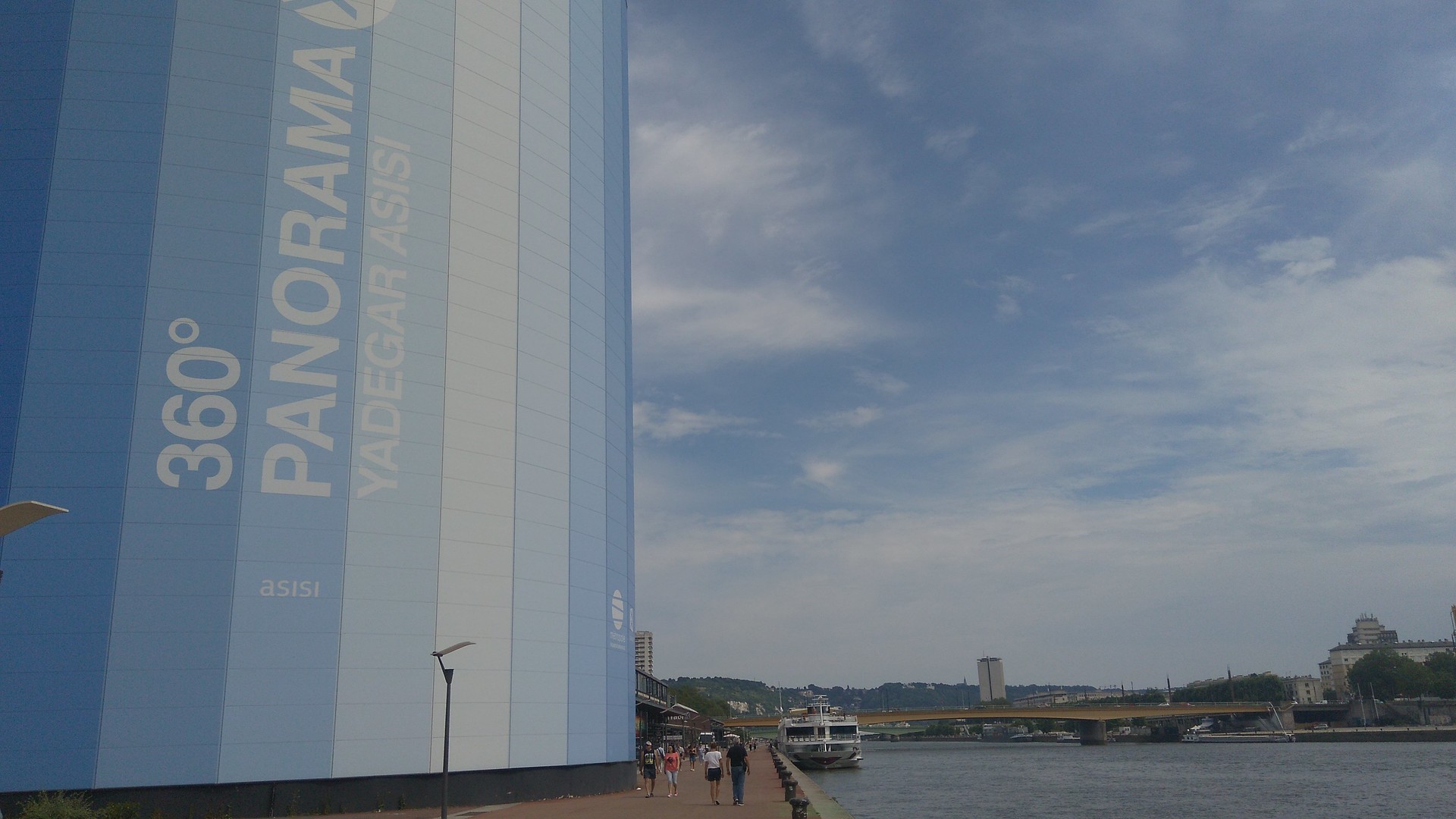
A reference to Jeanne is made before one enters the main room. The viewer is also provided with an explanatory video of the complex panorama composition throughout all the stages of its production by Asisi, which I found really interesting! What is really breathtaking, though, is the fact that, in the panorama, the lighting and sound effects show the change of days or eras, and some points of the immense drawing depict fires or destructed areas. If you go to the top level, it is possible to see clearly the Old-Market square, and someone being burned alive while other people watch. Now, who would that possibly be? That's right, it's none other than Jeanne, and this subtle jab at the history of Rouen as a whole, even though discreet, seemed to be rather clever, and will give you chills.
Jeanne's Tower
Unfortunately, one can only see the ruins left of Rouen's dungeon, the old castle of the king of England, which was demolished at some point. However one of the towers of the castle survived the demolition and is open for visits. That tower was named after Jeanne d'arc, but the truth is that she was kept in another tower of the building, yet, for the sake of her memory, this "memento" was made. You should be able to see the tower from the top of the Historial, while if you want to visit yourself, you will have to find it in the area between the Train station and the Museum of fine arts (it is so small that I do not recall it being on the historical monuments map so you might need to do some searching, good luck! )
Jeanne being a part of the Rouennaise culture
As I mentionned before, you can find traces of the heroine in every nook and cranny of Rouen, so all you have to do is.. look! Or better yet, listen to what the people say. For me, the Northeners, despite being a bit keyed-up, were a useful source of information, because they live the history with their own being, present and very much aware, at the place where everything occured. From one generation to the next, if you can truly listen, you will find yourself experiencing the legend from within the eyes of a local, which is.. precious, something worth treasuring. It's at that point when you will be able to say that you felt the culture surging through you, so don't hesitate and ask around!
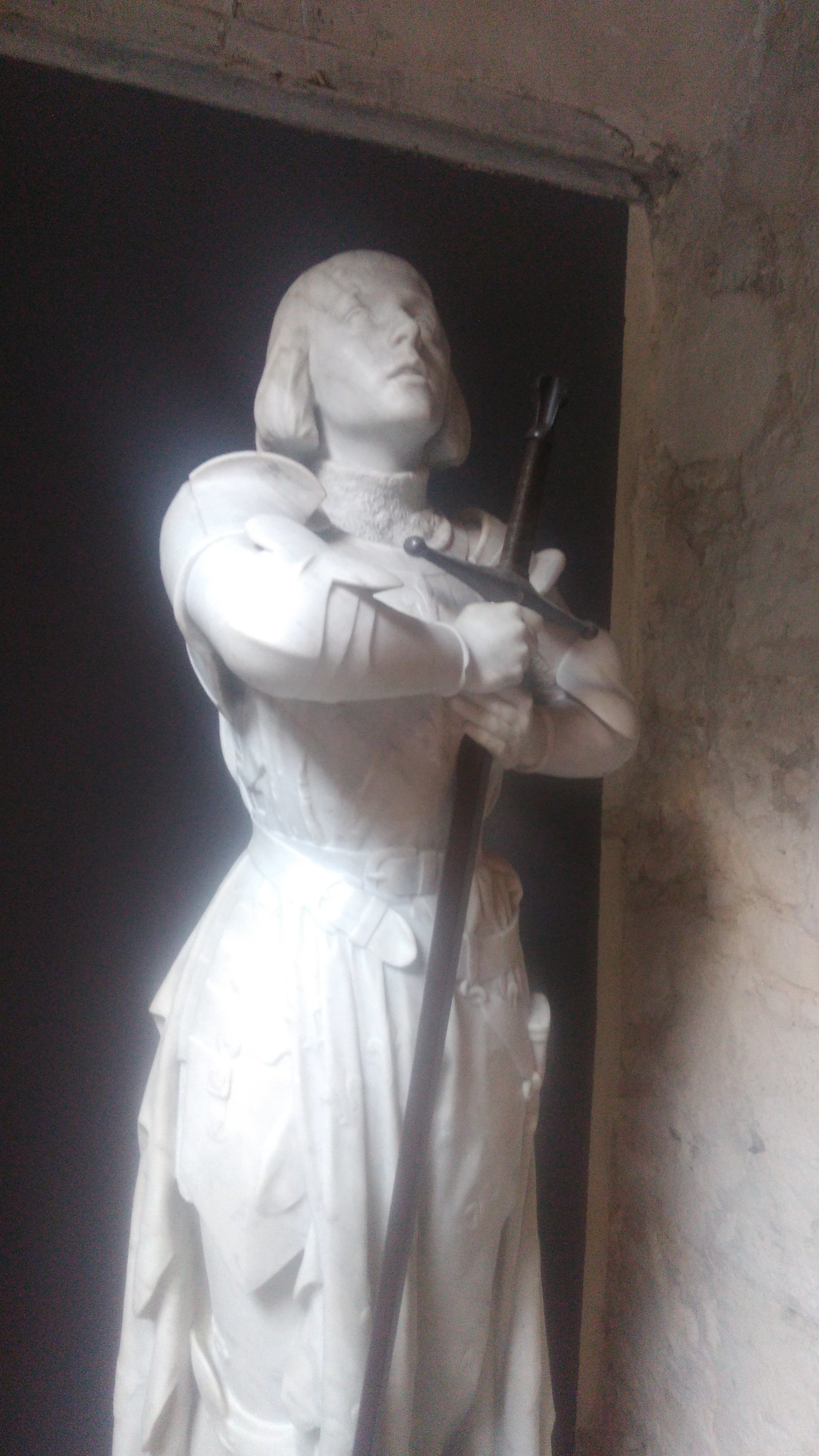
A sculpture of the heroine
My advice to you, is to always try your best to experience a city through its history and past, not just the present. Seeing as how Jeanne is one of the greatest and, probably, most famous figures involved with Rouen, it would be a pity to not follow her lingering presence across the city's beautiful alleys and landmarks, and let her story sink in (regardless of what you personally think of her). For me, knowing more about her and revisiting her mythical disposition in such a place, left me with a sense of awe and even more curiosity than before! So, in my book, the historical walk was done right!
However Jeanne is not the only figure one should focus on when in Rouen, plus there's a great amount of monuments that are absolutely worth visiting outside of the ones I mentioned, but all that is for another time! Hope my take on this aspect of the city will be of help and that it will ignite some interest in all of you!
Take it easy and see you soon, in the next entry!
Photo gallery
Content available in other languages
Want to have your own Erasmus blog?
If you are experiencing living abroad, you're an avid traveller or want to promote the city where you live... create your own blog and share your adventures!
I want to create my Erasmus blog! →























Comments (0 comments)